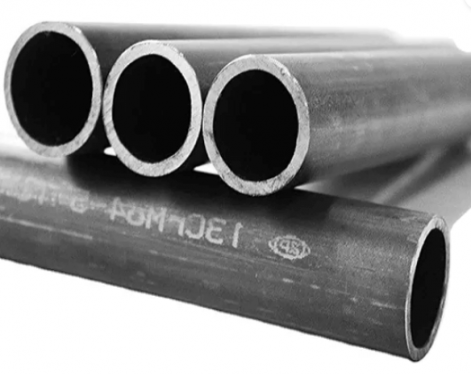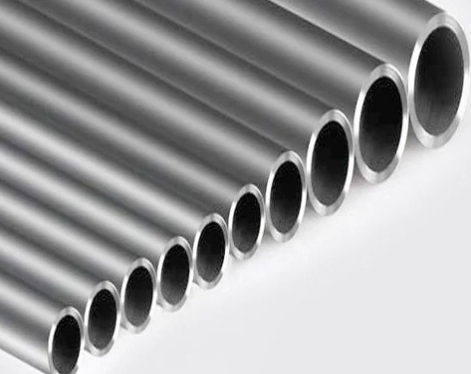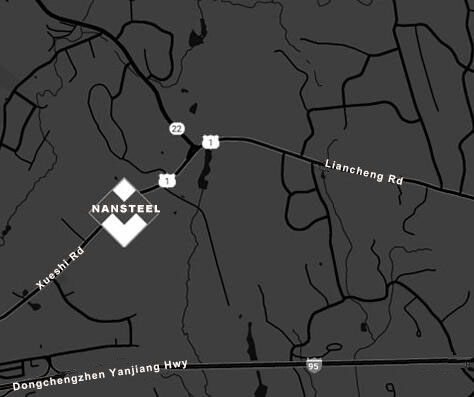The bending of seamless steel pipes refers to the deformation of a certain angle or arc by external force without damaging the pipe. This process is widely used in many industrial fields, such as petroleum, chemical industry, construction, automobile, etc. Nansteel Manufacturing Co., Ltd carefully summarizes the relevant information of seamless steel pipe bending:
Purpose of bending seamless steel pipes
1. Changing the direction of the pipeline: In the pipeline system, it is often necessary to change the direction of the pipeline to adapt to different layouts and connection requirements. At this time, elbows are needed.
2. Reduce the use of pipe fittings: Using elbows can reduce the use of pipe fittings (such as elbows and tees), thereby reducing connection points, reducing the risk of leakage, and improving the reliability of the pipeline system.
3. Meet special design requirements: Some special equipment or structures require the use of elbows with specific shapes.

Methods of bending seamless steel pipes
There are many ways to bend seamless steel pipes. According to the different bending methods and temperatures, they can be mainly divided into the following categories:
Cold bending
Bending at room temperature, commonly used methods are:
1. Bending with a pipe bender: Using a professional pipe bender for bending, suitable for bending small and medium-caliber, thin-walled steel pipes. This method is efficient and precise, but has certain restrictions on the material and wall thickness of the steel pipe.
2. Rolling bending: The steel pipe is bent by rotating and squeezing three or more rollers, suitable for large radius bending.
3. Press bending: Using molds and stamping equipment for bending, suitable for mass production.
Hot bending
Bending after heating the steel pipe to a certain temperature. Common methods are:
1. Medium frequency induction heating bending: Use medium frequency induction heating equipment to locally heat the bending part of the pipe, and then bend it. This method has fast heating speed, high efficiency, and good bending quality. It is suitable for bending large-diameter and thick-walled steel pipes.
2. Flame heating bending: Use flame to heat the bending part of the pipe, and then bend it. This method is relatively simple to operate, but the heating is uneven and it is easy to deform.
Factors affecting the bending quality of seamless steel pipes
1. Steel pipe material: Steel pipes of different materials have different plasticity and toughness, and different bending properties. Generally speaking, steel pipes with good plasticity and toughness are easier to bend and less likely to crack.
2. Steel pipe wall thickness: The thicker the wall thickness of the steel pipe, the more difficult it is to bend, requiring greater bending force, and it is more likely to deform.
3. Bending radius: The smaller the bending radius, the more difficult it is to bend, and it is more likely to deform and wrinkle.
4. Bending temperature (hot bending): Heating temperature that is too high or too low will affect the bending quality.
5. Bending equipment and molds: The accuracy and state of the bending equipment and molds directly affect the bending quality.
6. Lubrication: Using a suitable lubricant during the bending process can reduce friction, reduce bending force, and improve bending quality.
Quality standards of seamless steel pipes after bending
The steel pipe after bending needs to meet certain quality standards, mainly including:
1. Angle deviation: The bending angle should meet the design requirements and have a certain allowable deviation.
2. Ovality: After bending, the cross section of the steel pipe may be deformed and produce ovality, which should be controlled within a certain range.
3. Wall thickness reduction: After bending, the wall thickness of the outer side of the steel pipe will be reduced, and the reduction should be controlled within a certain range.
4. Surface quality: The surface of the steel pipe after bending should not have defects such as cracks, wrinkles, and scratches.
Read more: How to Choose Seamless Steel Pipes for Water Supply?
Purpose of bending seamless steel pipes
1. Changing the direction of the pipeline: In the pipeline system, it is often necessary to change the direction of the pipeline to adapt to different layouts and connection requirements. At this time, elbows are needed.
2. Reduce the use of pipe fittings: Using elbows can reduce the use of pipe fittings (such as elbows and tees), thereby reducing connection points, reducing the risk of leakage, and improving the reliability of the pipeline system.
3. Meet special design requirements: Some special equipment or structures require the use of elbows with specific shapes.

Methods of bending seamless steel pipes
There are many ways to bend seamless steel pipes. According to the different bending methods and temperatures, they can be mainly divided into the following categories:
Cold bending
Bending at room temperature, commonly used methods are:
1. Bending with a pipe bender: Using a professional pipe bender for bending, suitable for bending small and medium-caliber, thin-walled steel pipes. This method is efficient and precise, but has certain restrictions on the material and wall thickness of the steel pipe.
2. Rolling bending: The steel pipe is bent by rotating and squeezing three or more rollers, suitable for large radius bending.
3. Press bending: Using molds and stamping equipment for bending, suitable for mass production.
Hot bending
Bending after heating the steel pipe to a certain temperature. Common methods are:
1. Medium frequency induction heating bending: Use medium frequency induction heating equipment to locally heat the bending part of the pipe, and then bend it. This method has fast heating speed, high efficiency, and good bending quality. It is suitable for bending large-diameter and thick-walled steel pipes.
2. Flame heating bending: Use flame to heat the bending part of the pipe, and then bend it. This method is relatively simple to operate, but the heating is uneven and it is easy to deform.
Factors affecting the bending quality of seamless steel pipes
1. Steel pipe material: Steel pipes of different materials have different plasticity and toughness, and different bending properties. Generally speaking, steel pipes with good plasticity and toughness are easier to bend and less likely to crack.
2. Steel pipe wall thickness: The thicker the wall thickness of the steel pipe, the more difficult it is to bend, requiring greater bending force, and it is more likely to deform.
3. Bending radius: The smaller the bending radius, the more difficult it is to bend, and it is more likely to deform and wrinkle.
4. Bending temperature (hot bending): Heating temperature that is too high or too low will affect the bending quality.
5. Bending equipment and molds: The accuracy and state of the bending equipment and molds directly affect the bending quality.
6. Lubrication: Using a suitable lubricant during the bending process can reduce friction, reduce bending force, and improve bending quality.
Quality standards of seamless steel pipes after bending
The steel pipe after bending needs to meet certain quality standards, mainly including:
1. Angle deviation: The bending angle should meet the design requirements and have a certain allowable deviation.
2. Ovality: After bending, the cross section of the steel pipe may be deformed and produce ovality, which should be controlled within a certain range.
3. Wall thickness reduction: After bending, the wall thickness of the outer side of the steel pipe will be reduced, and the reduction should be controlled within a certain range.
4. Surface quality: The surface of the steel pipe after bending should not have defects such as cracks, wrinkles, and scratches.
Read more: How to Choose Seamless Steel Pipes for Water Supply?









